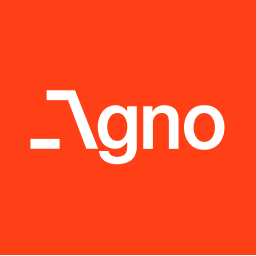-
 supermemoryVisit Website
supermemoryVisit WebsiteSupermemory AI is a versatile memory API that enhances LLM personalization effortlessly, ensuring developers save time on context retrieval while delivering top-tier performance.
0Website Contact for pricing -
Learn More
What is Supermemory AI
Supermemory AI is a cutting-edge universal memory API developed specifically for the AI era. Its primary purpose is to assist developers in enhancing their applications by eliminating the need to build retrieval systems from scratch. By personalizing large language models (LLMs) for users, Supermemory provides an unlimited context API that ensures automatic long-term context across conversations. Built with enterprise-grade performance and scalability at its core, this tool allows seamless integration across various teams and tools, enabling users to maintain control over their data while adhering to compliance standards. Whether deployed on the cloud, on-premises, or on-device, Supermemory AI accommodates any LLM provider, delivering industry-leading latency and accuracy.
Main Features of Supermemory AI
- Unlimited Context API: Automatically manages long-term context without manual programming.
- Model-Agnostic: Compatible with any large language model provider, ensuring versatility.
- Enterprise-Grade Performance: Designed to handle high-scale operations while maintaining rapid response times.
- Data Ownership: Users retain full control of their data, important for compliance and privacy.
- Seamless Integration: Enables tools and team workflows to connect effortlessly.
- Sub-400ms Latency: Offers fast processing speed with exceptional precision and recall.
-
 Visit Website
Visit Website
-
Learn More
What is The Full Stack AI
The Full Stack AI is a platform for builders who want to ship reliable, user-centered AI products. It spans the entire lifecycle of AI product development—problem definition, data strategy, GPU and infrastructure selection, LLM training or fine-tuning, evaluation, deployment, monitoring, continual learning, and UX design. Through curated news, an engaged community, and hands-on courses such as the LLM Bootcamp and Full Stack Deep Learning (FSDL), it teaches best practices and modern tools so teams can move from prototype to production with confidence and create real value with AI.
Main Features of The Full Stack AI
- End-to-end curriculum: Covers problem framing, data pipelines, prompt engineering, RAG, model training and fine-tuning, evaluation, safety, privacy, deployment, and observability.
- LLM Bootcamp: Practical projects for building LLM apps, including retrieval, evaluation harnesses, and production serving patterns.
- Full Stack Deep Learning (FSDL): Production-grade ML and MLOps patterns with code examples and implementation guidance.
- News and analysis: Curated updates on tools, frameworks, GPUs, and case studies to stay current with the AI ecosystem.
- Community for practitioners: Peer discussions, feedback, and support to accelerate learning and problem-solving.
- Tooling guidance: Practical advice on GPU selection, cloud setup, vector databases, orchestration, and CI/CD for ML.
- Templates and starter kits: Reusable project structures and checklists to reduce time-to-production.
-
 AnyscaleVisit Website
AnyscaleVisit WebsiteBuild, run, and scale AI apps fast with Ray. Cut costs on any cloud.
0Website Paid Contact for pricing -
Learn More
What is Anyscale AI
Anyscale AI is an AI application platform built on Ray, the open-source distributed computing framework. It helps teams build, run, and scale AI and Python workloads—such as LLM applications, model serving, fine-tuning, and batch inference—without heavy infrastructure management. With serverless Ray, autoscaling across CPUs and GPUs, and robust governance, Anyscale improves performance and cost efficiency on any cloud. Developers get unified tooling for deployment, observability, and lifecycle management, plus OpenAI-compatible endpoints and flexibility for any framework, accelerator, or stack.
Main Features of Anyscale AI
- Serverless Ray: Run distributed training, inference, and pipelines without provisioning or tuning clusters manually.
- LLM and model endpoints: OpenAI-compatible APIs for serving foundation models or your own fine-tuned models.
- Autoscaling and scheduling: Scale up and down across CPUs, GPUs, and accelerators based on workload demand.
- Cost optimization: Spot/priority instances, placement policies, and right-sizing to reduce AI infrastructure spend.
- Governance and security: RBAC, service accounts, cluster policies, audit logs, and VPC connectivity for controlled access.
- Observability: Centralized logs, metrics, traces, and cluster health to debug and monitor AI applications.
- Any cloud and stack: Deploy across clouds and integrate Python, PyTorch, TensorFlow, Hugging Face, and more.
- Developer tooling: SDKs and CLI for submitting Ray jobs, managing services, CI/CD integration, and reproducible deployments.
- Batch and streaming: Efficient distributed batch inference, data processing, and real-time serving patterns.
- Experimentation and evaluation: A/B testing, rollouts, and evaluation workflows to compare models and configs.
-
 SieveVisit Website
SieveVisit WebsiteSieve AI: enterprise video APIs for search, edit, translate, dub, analyze.
0Website Freemium Contact for pricing -
Learn More
What is Sieve AI
Sieve AI is a developer-first platform that provides high-quality AI video APIs for understanding, editing, and searching video at scale. Its production-grade endpoints handle transcription, translation, dubbing, scene detection, and semantic analysis, turning raw footage into structured, searchable metadata and localized outputs. Designed for reliability and speed, Sieve AI enables workflows such as video indexing, content moderation, and vector-based video search, helping developers, product teams, and enterprises ship video intelligence into their products with minimal overhead.
Main Features of Sieve AI
- Video understanding APIs: Extract transcripts, speakers, scenes, shots, objects, and topics to generate rich metadata for discovery and analytics.
- Translation and dubbing: Localize content with multilingual subtitles, voiceover, and lip-synced outputs to reach global audiences.
- Search and indexing: Build video search with embeddings, vector search, and time-coded results for precise content retrieval.
- Editing automations: Auto-generate captions, highlight reels, and cuts using scene and silence detection plus semantic cues.
- Production-grade reliability: Scalable REST APIs and SDKs with job queuing, retries, and webhooks for robust processing.
- Flexible I/O: Ingest files or URLs and export JSON, SRT/VTT captions, aligned transcripts, and per-frame metadata.
- Developer experience: Clear documentation, language SDKs, and consistent schemas to speed up integration.
-
 VeryfiVisit Website
VeryfiVisit WebsiteOCR APIs and mobile capture turn invoices and receipts into real-time data.
0Website Free Paid Contact for pricing -
Learn More
What is Veryfi AI
Veryfi AI is a document intelligence platform that uses OCR and machine learning to convert unstructured documents into structured, actionable data in real time. With developer-ready OCR APIs and mobile capture SDKs, it accurately extracts key fields and line items from invoices, bills, receipts, purchase orders, and checks. Designed for accounts payable automation, bill pay, expense management, and CPG loyalty programs, Veryfi helps teams reduce manual data entry, improve cycle times, and maintain enterprise-grade privacy and accuracy across industries like banking, construction, fintech, healthcare, and real estate.
Main Features of Veryfi AI
- OCR + ML Data Extraction: Real-time extraction of headers, totals, taxes, line items, vendors, and payment details from invoices, receipts, and POs.
- Developer-Friendly APIs: RESTful OCR APIs with JSON outputs for easy integration into ERP, AP, and expense systems.
- Mobile Capture SDKs: iOS and Android SDKs for on-device document capture with guided framing and auto-crop to improve image quality.
- Wide Document Coverage: Supports invoices, bills, receipts, purchase orders, checks, and similar unstructured business documents.
- Real-Time Processing: Low-latency processing for time-sensitive workflows like bill pay, loyalty validation, and point-of-sale receipt capture.
- Enterprise-Grade Privacy: Built with strong privacy controls and data protection for regulated industries.
- Normalization and Validation: Standardized field mapping, currency/locale handling, and confidence scores to streamline downstream automation.
- Scalable Architecture: Handles production volumes and bursty workloads without sacrificing accuracy.
-
 stable diffusion apiVisit Website
stable diffusion apiVisit WebsiteStable Diffusion API without GPU setup—fast, scalable, cost‑smart AI.
0Website Paid -
Learn More
What is stable diffusion api AI
stable diffusion api AI by ModelsLab is a developer-friendly platform that exposes powerful image generation and editing endpoints built on Stable Diffusion. It lets teams add text-to-image, image-to-image, inpainting, outpainting, and upscaling to apps without managing GPUs or ML infrastructure. With simple REST APIs, async jobs, and scalable cloud inference, you can generate production-ready visuals, automate creative workflows, and prototype features faster. ModelsLab reduces operational overhead and provides predictable performance so you can focus on building products, not servers.
Main Features of stable diffusion api AI
- Text-to-image and image-to-image: Generate or transform images from prompts, reference images, or style guides.
- Inpainting and outpainting: Edit selected regions or extend canvases while preserving context and composition.
- ControlNet support: Guide generations with pose, depth, or edge maps for consistent structure and layout.
- Upscaling and enhancement: Super-resolution, sharpening, and face restoration for cleaner, higher-res outputs.
- Prompt controls: Negative prompts, seed, guidance scale, steps, and samplers for reproducible results.
- Multiple model versions: Access popular Stable Diffusion checkpoints for different quality and speed needs.
- Synchronous and asynchronous jobs: Low-latency sync calls or queued async rendering for heavy workloads.
- Webhooks and callbacks: Receive completion events and URLs to generated assets in your backend.
- Secure API keys: Token-based authentication over HTTPS with usage metrics and request logs.
- SDKs and examples: Quick-start code snippets to integrate the image generation API in minutes.
-
 RekaVisit Website
RekaVisit WebsiteReka AI's agentic multimodal vision: turn video, image, text into actions.
0Website Contact for pricing -
Learn More
What is Reka AI
Reka AI is a multimodal AI research and product company that builds modular intelligence to turn unstructured video, images, audio, and text into actionable insights. Its platform, Reka Vision, delivers agentic visual understanding and semantic search, helping teams analyze scenes, track objects, and query content at scale. Combined with web agents for complex research and reasoning, Reka offers end-to-end solutions for discovery, editing assistance, and analytics—powered by novel multimodal transformers engineered from the ground up.
Main Features of Reka AI
- Agentic visual understanding: Detects scenes, objects, and activities to turn raw media into structured context.
- Multimodal search: Natural language search across video, image, audio, and text for fast content discovery.
- Web research agents: Tools that synthesize information, cite sources, and answer complex questions.
- Modular architecture: Flexible components and workflows that adapt to varied data and tasks.
- Editing and review assist: Accelerates video editing with smart highlights, moments, and metadata extraction.
- Scalable media analytics: Processes large libraries with indexing, retrieval, and query optimization.
- Transformer models from scratch: Purpose-built multimodal transformers for robust cross-modal reasoning.
- Governance and controls: Enterprise-oriented settings for privacy, auditability, and team collaboration.
-
 Visit Website
Visit Website
-
Learn More
What is 昇思MindSpore AI
昇思MindSpore AI is an open-source deep learning framework from Huawei built for full-scenario development across device, edge, and cloud. It provides source code transformation-based automatic differentiation, a high-performance graph execution engine, and flexible parallel training so teams can train once and deploy across multiple targets. Optimized for computer vision and natural language processing, it streamlines data pipelines, distributed training, and inference. A Python-first API and backends for CPU, GPU, and Ascend hardware help researchers and engineers build reliable, scalable AI systems.
Main Features of 昇思MindSpore AI
- Full-scenario support: Train and run inference consistently across device, edge, and cloud environments.
- Automatic differentiation: Source code transformation delivers efficient and accurate gradients for complex models.
- Flexible execution: Graph mode for performance and PyNative-style execution for iterative development.
- Distributed parallelism: Data, model, and pipeline parallel training with auto-parallel strategies.
- Graph execution engine: Operator fusion and optimization for high throughput and low latency.
- Data processing pipeline: Built-in dataset APIs and augmentation for scalable input pipelines.
- Edge deployment: MindSpore Lite enables lightweight, on-device inference for mobile and IoT.
- Ecosystem and tooling: Tutorials, examples, and community resources to accelerate development.
-
 MomenVisit Website
MomenVisit WebsiteMomen AI: no-code agents and apps that plan, execute, and monetize.
0Website Freemium Contact for pricing -
Learn More
What is Momen AI
Momen AI is a no-code platform for building AI-powered apps and agents that plan and execute tasks end to end. It provides a flexible GenAI app development framework so you can create full-stack applications by connecting the frontend, backend, and databases without writing code. Teams design agentic workflows, integrate APIs and services, and automate business processes in minutes. With built-in payments, account systems, and responsive UI components, Momen AI helps you launch, scale, and monetize AI products faster and with less engineering overhead.
Main Features of Momen AI
- No-code builder: Drag-and-drop UI components and layouts to assemble responsive, production-ready interfaces.
- Agentic workflows: Create AI agents that plan, reason, and execute multi-step tasks with tools and conditional logic.
- Full-stack GenAI framework: Orchestrate frontend, backend, and data layers in one place for faster AI app development.
- Data and database connections: Connect to existing databases and manage data flow for stateful, context-aware apps.
- Backend and API integrations: Plug in third-party services and internal APIs to extend app capabilities without code.
- Built-in auth and accounts: Add sign-up, login, and user management to support secure, multi-user experiences.
- Payments and monetization: Enable subscriptions, one-time payments, or usage-based billing directly in your app.
- Responsive UI design: Ensure great performance across devices with prebuilt, mobile-friendly components.
- Automation and orchestration: Schedule tasks, trigger events, and link actions to streamline operations.
- Scalable deployment: Move from prototype to production with a platform designed for reliability and growth.
-
 Visit Website
Visit Website
-
Learn More
What is Msty AI
Msty AI is a multi‑model AI chat and research workspace that unifies leading language models in one private, flexible interface. It connects to OpenAI, DeepSeek, Claude, and community models via Ollama or Hugging Face, letting you compare outputs and choose the best model for each task. With offline capability, split and branching chats, concurrent sessions, web search, retrieval‑augmented generation (RAG), and a reusable prompts library, Msty AI streamlines everyday workflows while keeping control of your data—positioned as an alternative to Perplexity, Jan, and LM Studio.
Main Features of Msty AI
- Unified model hub: Use OpenAI, DeepSeek, Claude, Ollama, and Hugging Face models in a single interface for seamless switching and comparison.
- Private and offline mode: Run local models through Ollama or downloaded weights to keep prompts and data on your machine.
- Split and branching chats: Create parallel threads, branch from any message, and compare responses side by side.
- Concurrent chats: Run multiple sessions at once to speed up research and evaluation.
- Web search integration: Enrich answers with live search and sources for better context.
- RAG (retrieval‑augmented generation): Ground responses in your own files or knowledge bases for more accurate, domain‑aware output.
- Prompts library: Save, reuse, and share prompt templates to standardize workflows.
- Granular controls: Manage provider keys, temperature, max tokens, and system prompts per session.
-
 Visit Website
Visit Website
-
Learn More
What is Convai
Convai is a conversational AI platform that enables developers to add real-time voice-driven characters to games, virtual worlds, and XR experiences. Via streaming APIs and SDKs for Unity and Unreal Engine, it blends automatic speech recognition (ASR), natural language understanding (NLU), response generation, and text-to-speech (TTS) to power interactive NPCs and speech-enabled applications. With perception, memory, and action capabilities, characters can listen, understand, speak, navigate, and interact with their environment for dynamic gameplay and immersive metaverse interactions.
Main Features of Convai
- Streaming Speech Recognition (ASR): Low-latency voice input with voice activity detection and interruptible dialog for natural back-and-forth conversations.
- Language Understanding and Generation: Context-aware NLU and multi-turn response generation for believable NPC dialog and task-oriented interactions.
- Text-to-Speech (TTS): Natural voices with configurable styles, speed, and emotions for lifelike character speech.
- Perception and World Awareness: Characters can perceive objects, locations, and player actions to ground responses in the game world.
- Actions and Navigation: Trigger animations, pathfinding, and object interactions directly from conversational intents.
- Memory and Personality: Persistent memory, knowledge grounding, and character profiles to maintain continuity and unique behavior.
- Unity and Unreal Integration: Ready-to-use SDKs, blueprints, and components that speed up prototyping and production.
- Cloud APIs: Scalable, real-time endpoints for voice-to-voice interactions across games, metaverse spaces, and XR apps.
- Safety and Controls: Configurable filters, content controls, and analytics to manage quality and compliance.
- Multilingual Support: Build speech-enabled experiences for global audiences.
-
 BuildShipVisit Website
BuildShipVisit WebsiteVisual low‑code backend to build APIs, automate workflows, and plug AI.
0Website Freemium -
Learn More
What is BuildShip AI
BuildShip AI is a visual low-code backend builder that helps teams design, automate, and deploy backend APIs and workflows fast. Using a drag-and-drop canvas with pre-built workflow nodes, you can compose endpoints, scheduled jobs, and background tasks while integrating with external tools or any AI model. The platform blends no-code speed with developer control: generate nodes with AI, then tweak the underlying code when needed. With one-click, instant deployment, BuildShip AI turns ideas into production-ready services without managing servers or complex infrastructure.
Main Features of BuildShip AI
- Visual low-code canvas: Build backend logic with a drag-and-drop interface for faster iteration and clearer architecture.
- API endpoint builder: Create production-ready backend APIs to power apps, dashboards, and integrations.
- Workflow automation: Orchestrate complex multi-step workflows across tools and services.
- Scheduled jobs: Run recurring tasks and background jobs with configurable schedules.
- AI integration: Connect any AI model, plug in pre-built nodes, or generate workflow steps with AI assistance.
- Code tweaking: Drop to code when needed for custom logic and fine-grained control.
- One-click deployment: Push updates instantly and ship changes without managing servers.
- Extensible nodes: Combine pre-built workflow nodes to accelerate common backend tasks.
-
 AgnoVisit Website
AgnoVisit WebsiteOpen-source, model-agnostic stack for fast multimodal AI agents with memory.
0Website Free Contact for pricing -
Learn More
What is Agno AI
Agno AI is an open-source library for building lightning-fast, model-agnostic, multimodal AI agents. It lets developers add memory, domain knowledge, tool use, and structured reasoning to create robust, production-ready assistants. Lightweight yet extensible, Agno AI helps teams build, ship, and monitor agentic systems across providers and modalities without lock-in. With a clean API and built-in observability, it speeds up prototyping while keeping deployments future-proof. Support for streaming, async workflows, and reusable components delivers high performance at scale.
Main Features of Agno AI
- Model-agnostic architecture: Swap between different language and vision models without code rewrites, avoiding vendor lock-in.
- Multimodal I/O: Build agents that understand and generate across text, images, and other modalities for richer user interactions.
- Memory and knowledge integration: Add short- and long-term memory, retrieval, and knowledge sources to ground responses and improve continuity.
- Tool use and automation: Connect external APIs, databases, and functions so agents can take actions and complete end-to-end tasks.
- Reasoning and orchestration: Configure planning, stateful workflows, and agent handoffs to handle complex, multi-step processes.
- Observability and monitoring: Trace runs, inspect events, and capture metrics to debug, optimize, and ensure reliability in production.
- Performance at scale: Async execution, streaming, caching, and parallel calls for low latency and cost-efficient throughput.
- Extensible interfaces: Pluggable backends for memory, vector stores, tools, and transports to fit existing stacks.
- Deployment flexibility: Run locally, on servers, or in serverless/containerized environments using your own infrastructure.
-
 TwelveLabsVisit Website
TwelveLabsVisit WebsiteMultimodal video AI for deep search, analytics, and workflow automation.
0Website Freemium Contact for pricing -
Learn More
What is TwelveLabs AI
TwelveLabs AI is a video intelligence platform powered by multimodal foundation models like Marengo and Pegasus. It understands vision, audio, speech, and on‑screen text to index large video libraries, enabling semantic video search, deep analysis, and video‑to‑text generation at scale. With natural language queries, users can find scenes, actions, objects, and topics, then extract summaries, captions, and time‑coded insights. Delivered via API and tools, TwelveLabs helps teams automate video workflows, enrich metadata, and accelerate content discovery.
Main Features of TwelveLabs AI
- Multimodal video understanding: Combines visual signals, audio, ASR, and OCR to interpret context, actions, and entities within long-form video.
- Semantic video search: Natural language search across massive archives with temporal localization to jump to the exact moment in a timeline.
- Video indexing and embeddings: Generates high-quality video embeddings for fast retrieval, tagging, and similarity search.
- Video-to-text generation: Automated summaries, captions, and descriptions to power SEO, archives, and accessibility.
- Action, object, and scene detection: Identify concepts, topics, and shot changes for detailed metadata enrichment.
- Scalable API and SDKs: Process large volumes with batch ingestion, webhooks, and developer-friendly endpoints.
- Customization options: Tune search behavior and indexing strategies to match domain-specific content and taxonomies.
- Analytics and workflow automation: Build pipelines that discover highlights, flag sensitive content, and automate review.
- Enterprise readiness: Privacy controls and integrations with MAM/DAM and cloud storage for production deployments.
- Benchmarked accuracy: Published benchmarks indicate competitive performance versus major cloud and open-source models.
-
 Visit Website
Visit Website
-
Learn More
What is HTTPie AI
HTTPie AI is an AI-powered assistant inside HTTPie that turns natural language into precise API requests. It helps developers and testers build HTTP requests, set headers and JSON bodies, and explain responses or errors in plain English. Available in the terminal and in HTTPie for Web & Desktop, it streamlines API testing, debugging, and exploration across REST and GraphQL. It can also suggest fixes, generate httpie or cURL commands, and guide authentication, making everyday API work faster and more reliable from first call to integration.
Main Features of HTTPie AI
- Natural language to requests: Describe what you want, and it generates HTTP methods, URLs, headers, and payloads.
- Response and error explanations: Interprets status codes, error messages, and payloads with actionable suggestions.
- Command generation: Produces ready-to-run httpie and cURL commands for terminal workflows.
- REST and GraphQL support: Helps craft REST endpoints and GraphQL queries or mutations with variables.
- Auth helpers: Assists with common authentication schemes like Bearer tokens and Basic Auth.
- Schema awareness: When you provide API docs or an OpenAPI schema, it can reference endpoints and parameters.
- Reusable snippets: Save, edit, and reuse requests; maintain history with context.
- Works everywhere: Use the assistant in the command-line client or in HTTPie’s web & desktop app.
-
 Visit Website
Visit Website
-
Learn More
What is SiliconFlow AI
SiliconFlow AI is an AI infrastructure platform that provides unified API access to a wide range of cutting-edge AI models and scalable cloud deployment. Developers and enterprises can run text generation, embeddings, and multimodal inference through a single, consistent interface, then move from prototype to production with managed GPU resources and autoscaling. With built-in observability, secure access controls, and cost governance, SiliconFlow AI streamlines the entire lifecycle of AI applications—so teams can build, integrate, and operate reliable AI features without managing complex model serving or hardware.
Main Features of SiliconFlow AI
- Unified Model API: Access popular language and multimodal models for text generation, summarization, embeddings, and more through a consistent endpoint and schema.
- Scalable inference: Managed GPU/CPU infrastructure with autoscaling for steady throughput, low latency, and reliable production performance.
- Serverless deployment: Move from sandbox to production without provisioning clusters; versioning and safe rollouts help reduce downtime.
- SDKs and REST: Simple REST API and SDKs for common languages to speed up integration in web, backend, and mobile apps.
- Observability and analytics: Monitor latency, token usage, and error rates; set budgets and alerts to control costs.
- Security and governance: API key management, rate limiting, encryption in transit, and private integration options for enterprise needs.
- Response streaming and batching: Stream tokens for interactive UX and batch requests to optimize cost and throughput.
- Flexible routing: Swap models or add fallback logic without changing application code to improve resilience.
-
 Confident AIVisit Website
Confident AIVisit WebsiteDeepEval-native LLM evaluation: 14+ metrics, tracing, dataset tooling.
0Website Freemium Paid Contact for pricing -
Learn More
What is Confident AI
Confident AI is an all-in-one LLM evaluation platform built by the creators of DeepEval. It offers 14+ metrics to run experiments, manage datasets, trace prompts and outputs, and incorporate human feedback to continuously improve model quality. Designed to work seamlessly with the open-source DeepEval framework, it supports diverse use cases from RAG pipelines to agents. Teams use Confident AI to benchmark, monitor, and safeguard LLM applications with consistent metrics and rich tracing, streamlining dataset curation, metric alignment, and automated testing.
Main Features of Confident AI
- Comprehensive metrics suite: Evaluate quality, relevance, robustness, safety, latency, and cost across 14+ metrics for reliable LLM performance evaluation.
- Dataset management and curation: Build, version, and label datasets to align tests with real user scenarios and track changes over time.
- Experiment tracking and benchmarking: Compare prompts, models, and configurations; detect regressions and identify the best-performing variants.
- Human-in-the-loop feedback: Collect annotations and integrate human judgment to calibrate metrics and refine evaluation criteria.
- Tracing and observability: Trace inputs, context, and outputs to diagnose failures, analyze token usage, and understand model behavior.
- Automated testing and CI: Run evaluations on every change with regression gates to ship safer updates faster.
- DeepEval integration: Use the open-source DeepEval framework and flexible SDKs to instrument any LLM workflow.
- Collaboration and reporting: Share findings with stakeholders via dashboards and artifacts that demonstrate improvements.
-
 Nightfall AIVisit Website
Nightfall AIVisit WebsiteAI-powered DLP that finds PII, blocks exfil, and simplifies compliance.
0Website Contact for pricing -
Learn More
What is Nightfall AI
Nightfall AI is an all-in-one data loss prevention (DLP) platform that uses AI to discover, classify, and protect sensitive data across SaaS apps, generative AI tools, endpoints, and cloud services. It detects PII, PHI, PCI, secrets like API keys, and source code, then automatically alerts, redacts, or blocks to prevent data exfiltration. With data detection and response, data exfiltration prevention, data security posture management, encryption, and an AI firewall for LLMs, Nightfall helps reduce breach risk, improve visibility into data flows, and streamline compliance (e.g., GDPR, HIPAA, SOC 2).
Main Features of Nightfall AI
- AI-powered detection: Accurate classification of PII, PHI, PCI, secrets, and code in structured and unstructured data, including images via OCR.
- Data Detection & Response (DDR): Real-time alerts, triage, risk scoring, and automated remediation workflows (redact, quarantine, revoke sharing).
- Data Exfiltration Prevention: Policy-based blocking for risky sharing, downloads, or copy/paste across SaaS, gen AI apps, and endpoints.
- Data Security Posture Management (DSPM): Inventory and risk assessment of data across cloud and SaaS to remediate misconfigurations and overexposure.
- AI Firewall for LLMs: Inspect and sanitize prompts/responses, mask sensitive content, and enforce guardrails across gen AI tools.
- Encryption & tokenization: Protect sensitive data with masking, hashing, or encryption to minimize exposure and enable safer workflows.
- Broad integrations: Connectors for Slack, Google Drive, GitHub, Jira, Confluence, Notion, email, cloud storage, and SIEM/SOAR tools.
- Custom policies & detectors: Build precise rules, exact data match, regex, and context-aware detection tuned to your environment.
- Developer APIs & SDKs: Embed detection into CI/CD, data pipelines, and applications to prevent secrets and PII leaks earlier.
- Compliance reporting: Evidence and audit-ready reports for GDPR, HIPAA, PCI DSS, SOC 2, and internal governance.
-
 DHTMLX ChatBotVisit Website
DHTMLX ChatBotVisit WebsiteMIT JS widget for LLM-ready chatbot UIs—flexible, configurable, mobile.
0Website Free -
Learn More
What is DHTMLX ChatBot AI
DHTMLX ChatBot AI is a MIT-licensed JavaScript widget for building modern chatbot interfaces for AI support agents and assistants. It connects to any large language model through your own backend, delivering a flexible, configurable chat UI without vendor lock-in. The component supports multiple chat patterns, adjustable typing speed, and rich Markdown rendering. A built-in sidebar lets users manage conversations with different agents. Lightweight, responsive, and mobile-friendly, it fits smoothly into existing web apps and design systems.
Main Features of DHTMLX ChatBot AI
- LLM-agnostic integration: Connect to any LLM via REST or WebSocket through your server, keeping model choice and routing under your control.
- Customizable chat patterns: Configure single or multi-turn flows, system prompts, and agent roles to match your UX.
- Typing speed control: Simulate human-like responses with adjustable typing speed and streaming behavior.
- Markdown support: Render formatted text, code blocks, and lists for clearer AI-generated answers.
- Multi-agent sidebar: Manage multiple chats and switch between different agents or topics in one UI.
- Lightweight and fast: Minimal footprint ensures quick load times and smooth interactions.
- Responsive and mobile-friendly: Works seamlessly across desktops, tablets, and smartphones.
- Flexible styling: Adapt colors, layout, and components to match brand guidelines and design systems.
- Event-driven API: Hook into key events (send, receive, error) to trigger logging, analytics, or custom logic.
- MIT license: Open-source terms suitable for personal, commercial, and enterprise use.
-
 Voxel51Visit Website
Voxel51Visit WebsiteAnalyze, curate, and evaluate visual data faster with Voxel51 FiftyOne.
0Website Contact for pricing -
Learn More
What is Voxel51 AI
Voxel51 AI is a visual AI platform that helps teams build better computer vision systems by focusing on data quality. Powered by the open-source library FiftyOne and enterprise offerings, it enables users to explore, curate, and evaluate multimodal datasets at scale. You can visualize labels and predictions, search embeddings, uncover failure modes and biases, and close data gaps to boost model performance. With seamless integrations across ML frameworks, storage, and annotation tools, Voxel51 AI streamlines dataset management, model debugging, and continuous improvement.
Main Features of Voxel51 AI
- Interactive dataset visualization: Inspect samples, labels, and predictions with powerful filtering, faceting, and slices.
- Curate smarter datasets: Detect duplicates, outliers, edge cases, and class imbalances to improve data coverage.
- Embeddings and similarity search: Explore embedding spaces, cluster content, and find visually similar samples.
- Model evaluation and error analysis: Compare runs, inspect confusion, examine misclassifications, and analyze failure modes.
- Bias and data gap detection: Identify systematic errors and underrepresented scenarios to reduce model risk.
- Multimodal support: Work with images, video, and rich labels (detections, segmentations, keypoints, and more).
- Format and tool compatibility: Import/export common dataset formats like COCO, YOLO, and Pascal VOC; integrate with major annotation services.
- ML stack integrations: Use with PyTorch, TensorFlow, and popular training pipelines for seamless experimentation.
- Versioning and reproducibility: Track dataset states, curation decisions, and experiments for reliable iteration.
- Team collaboration (enterprise): Role-based access, sharing, and scalable infrastructure for production workflows.
-
 Visit Website
Visit Website
-
Learn More
What is Devv AI
Devv AI is an AI-powered developer search engine that combines large language models with real-time data from Stack Overflow, GitHub, and DevDocs. Through GitHub Mode, Web Mode, and Chat Mode, it delivers contextual answers, repository-aware insights, and up-to-date guidance. Devv AI streamlines debugging, API lookups, and design decisions by grounding responses in trusted sources and providing citations. Its goal is to cut research time, reduce tab-hopping, and help engineers solve programming problems quickly and reliably.
Main Features of Devv AI
- GitHub Mode: Search and understand code with repository-aware context, enabling targeted answers about files, functions, dependencies, and project structure.
- Web Mode: Pulls fresh information and solutions from Stack Overflow, GitHub discussions, and DevDocs, with links and citations for verification.
- Chat Mode: Conversational problem solving with LLMs that generates code snippets, walkthroughs, and explanations tailored to your query.
- Source-grounded responses: Answers cite the origin, helping you validate solutions and trace details back to the original documentation or thread.
- Code-oriented search: Understand errors, APIs, libraries, and patterns quickly with results optimized for developer workflows.
- Multi-language coverage: Helpful for common stacks such as JavaScript/TypeScript, Python, Java, Go, Rust, and more.
-
 QodexVisit Website
QodexVisit WebsiteAI-driven API testing and security. Chat-generate tests, no code.
0Website Contact for pricing -
Learn More
What is Qodex AI
Qodex AI is an AI-driven platform for automated API testing and security. It helps teams discover live and documented APIs, generate test cases via a natural-language chat interface, and execute them in the cloud or on a local runner—without writing code. By combining test generation, orchestration, and security checks, Qodex AI streamlines regression testing, validates endpoints, and flags risky behaviors early in the lifecycle. The result is faster coverage, safer releases, and a simpler workflow for maintaining reliable, secure APIs at scale.
Main Features of Qodex AI
- API discovery: Automatically identifies available endpoints and parameters to build a reliable starting inventory.
- Chat-based test generation: Describe scenarios in plain English; the system drafts functional and negative tests with assertions.
- Automated security checks: Runs security-focused tests to surface common API vulnerabilities and misconfigurations.
- Cloud and local execution: Run suites on hosted infrastructure or local machines for sensitive or air-gapped environments.
- No-code workflow: Create, edit, and organize tests without writing scripts, lowering the barrier for QA and developers.
- CI/CD integration: Trigger tests on pull requests or deployments and gate releases with pass/fail policies.
- Detailed reporting: Get logs, metrics, and failure traces to quickly diagnose issues across endpoints.
- Versioning and collaboration: Share test suites, review changes, and keep history aligned with service updates.
-
 Visit Website
Visit Website
-
Learn More
What is TestSprite AI
TestSprite AI is an AI-powered end-to-end testing platform that automates quality assurance for software teams. With minimal input, it generates test plans, writes executable test code, runs suites across varied scenarios, debugs failures, and produces clear test reports. By converting high-level requirements and user flows into reliable coverage, it shortens release cycles and reduces manual effort. Software development managers get a self-serve testing solution that scales with the codebase and helps prevent regressions across features, services, and environments.
Main Features of TestSprite AI
- AI-generated test plans: Transform requirements, user stories, and flows into structured, prioritized test plans.
- Automatic test code creation: Produce executable tests without manual scripting to accelerate coverage.
- Autonomous execution: Run end-to-end suites across multiple scenarios with minimal setup.
- AI-assisted debugging: Triage failures, surface root-cause clues, and suggest fixes to stabilize tests faster.
- Reporting and analytics: View pass/fail trends, defect insights, and coverage summaries for decision-making.
- Scalable coverage: Expand from smoke checks to full regression testing as the application grows.
- Low-friction onboarding: Minimal configuration to get from plan to execution quickly.
- Team-friendly workflow: Enable developers and QA to collaborate on scenarios and review results in one place.
-
 Visit Website
Visit Website
-
Learn More
What is ShipFast AI
ShipFast AI is a production-ready Next.js boilerplate that helps developers and founders launch SaaS products and startup ideas in days, not weeks. It includes secure user authentication, subscription-friendly payments, SEO utilities, and polished UI components within a clean, scalable structure. By handling repetitive groundwork—routing, dashboards, and environment configuration—ShipFast AI lets teams focus on core product features and customer value. Build, iterate, and deploy faster with a modern, performance-minded codebase that’s easy to customize.
Main Features of ShipFast AI
- Next.js foundation: Built on a modern React framework for fast rendering, routing, and SSR/SSG options.
- Authentication included: Plug-in-ready auth flows to manage sign-up, sign-in, and session handling.
- Subscription-ready payments: Pre-wired payment logic to accept subscriptions and one-time charges.
- SEO tooling: Helpers for metadata, sitemaps, and structured content to boost search visibility.
- Reusable UI components: Consistent, accessible components for layouts, forms, and dashboards.
- Starter pages: Common pages such as landing, pricing, dashboard, and account settings.
- API routes: Server-side endpoints for handling webhooks, billing events, and app logic.
- Config and env management: Clear environment variable setup for keys and secrets.
- Performance-first defaults: Sensible optimizations for speed, accessibility, and reliability.
- Deployment ready: Works smoothly with popular serverless and Node.js hosting providers.
-
 DocuWriter AIVisit Website
DocuWriter AIVisit WebsiteAI that turns source code into docs, tests, refactors, even converts.
0Website Free trial Paid -
Learn More
What is DocuWriter AI
DocuWriter AI is an AI-powered development assistant that converts source code into clear documentation, reliable tests, and cleaner implementations. It analyzes your codebase to generate function and API docs, propose refactors, optimize complexity, and translate code between languages. By automating routine maintenance, it helps teams improve readability, test coverage, and long-term maintainability without disrupting existing workflows. With support for multiple programming languages and configurable rules, DocuWriter AI accelerates onboarding, reduces technical debt, and keeps codebases consistent—so engineers can focus on building features instead of writing boilerplate docs and tests.
Main Features of DocuWriter AI
- Automated code documentation: Generates readable function, class, and API docs aligned with style guides and inline comments.
- Test suite generation: Creates unit and integration test stubs with suggested cases to increase coverage and catch regressions earlier.
- Refactoring and optimization: Identifies complexity, dead code, and repetitive patterns; proposes cleaner, more maintainable alternatives.
- Code language conversion: Translates logic between programming languages to support migrations and cross-stack reuse.
- Multi-language support: Works across popular ecosystems to help mixed-technology teams standardize documentation and tests.
- Review-first workflow: Presents changes as diffs for safe review and acceptance before updating your codebase.
- Configurable templates: Customize documentation tone, test frameworks, and naming conventions for consistency.
- Repository-scale automation: Batch-process files or modules to quickly modernize large projects.
-
 Visit Website
Visit Website
-
Learn More
What is Wisp AI
Wisp AI is a headless CMS built for Next.js and React, designed to streamline blogging and content management for developers, hackers, and founders. It combines a distraction-free editor, quick setup, and global content delivery via CDN with practical SEO optimization. By removing markdown and image-handling hassles, Wisp helps teams publish faster and keep sites current. Multi-tenant support, comments, custom content types, mobile-first workflows, custom React components, and AI-powered CTA and related post suggestions help grow traffic with less effort.
Main Features of Wisp AI
- Headless CMS for Next.js & React: Native developer experience for React-based stacks, ideal for modern JAMstack sites.
- Distraction-free editor: Clean writing environment that simplifies drafting, editing, and publishing.
- Easy setup: Minimal configuration to get content flowing into your Next.js app quickly.
- Global CDN delivery: Fast content and asset delivery for improved performance and user experience.
- SEO optimization: Built-in SEO-friendly controls to help pages rank and increase organic visibility.
- No markdown or image hassles: Eliminate formatting friction and image pipeline complexity.
- Multi-tenant CMS: Manage content for multiple projects, brands, or clients from one workspace.
- CMS with comments: Enable reader feedback and community engagement directly alongside content.
- Custom content types: Model flexible schemas that match your blog, docs, or marketing needs.
- Mobile-first CMS: Create and manage content on the go with a mobile-friendly interface.
- Custom React components: Drop in reusable blocks and interactive components inside content.
- AI suggestions: Generate call-to-action ideas and related posts to improve engagement and internal linking.
-
 AvaturnVisit Website
AvaturnVisit WebsiteAvaturn AI turns selfies into lifelike 3D avatars for games, metaverse, SDK.
0Website Freemium -
Learn More
What is Avaturn AI
Avaturn AI is a next-generation avatar platform that uses artificial intelligence to convert 2D photos into realistic 3D gaming avatars. It creates lifelike, rigged, and animatable characters that are fully customizable and suitable for metaverses, games, VR/AR, and social apps. Users can generate an avatar from a selfie, fine-tune appearance, and export a 3D model for real-time use. For developers, the platform offers an avatar SDK and APIs to integrate photo-to-3D creation into onboarding flows or in-app editors, accelerating user personalization and streamlining character pipelines.
Main Features of Avaturn AI
- AI photo-to-3D generation: Turn a single selfie into a realistic, rigged 3D avatar with consistent facial structure and proportions.
- Full customization controls: Adjust body shape, skin tone, hairstyles, facial features, and outfits to match brand style or player preference.
- Animation-ready avatars: Output characters with a standard rig suitable for real-time animation, motion capture, and retargeting workflows.
- Developer-friendly avatar SDK: Embed avatar creation in web or mobile apps with an SDK and API endpoints designed for easy integration.
- 3D model export: Export optimized 3D avatars for engines and platforms, enabling rendering, networking, and gameplay interactions.
- Real-time performance: Avatars are designed for low-latency experiences, helping maintain frame rates in games and interactive apps.
- Branding and theming: Configure the look and asset library to align with a game’s art direction or a product’s visual identity.
-
 Visit Website
Visit Website
-
Learn More
What is CometAPI AI
CometAPI AI is a unified REST layer that aggregates hundreds of AI models, including Google’s Gemini family, behind one consistent endpoint. Instead of juggling multiple vendor URLs, SDKs, and credentials, you direct your client to https://api.cometapi.com/v1 and specify the target model per request. The platform streamlines API key management, enforces usage quotas, and centralizes billing dashboards for clear cost control. Teams gain a vendor-agnostic integration path, faster experimentation, and simpler operations without rebuilding integrations for every provider.
Main Features of CometAPI AI
- Single, consistent endpoint: Call many AI providers through one base URL while keeping a uniform request pattern.
- Model selection per request: Choose the exact model (e.g., Google Gemini) in each API call to compare quality, speed, and cost.
- Built-in API key management: Centralize and secure credentials to reduce operational overhead and configuration sprawl.
- Usage quotas and limits: Enforce per-key or per-project quotas to prevent overages and control consumption.
- Billing dashboards and analytics: Track spend, requests, and token usage in one place for better forecasting and governance.
- Vendor-agnostic integration: Swap or add models without significant code changes, lowering the risk of lock-in.
- Standardized payloads and responses: Reduce edge-case handling across providers with a consistent REST interface.
- Scalable operations: Consolidated observability helps teams manage high-volume workloads more confidently.
-
 FireScrapVisit Website
FireScrapVisit WebsiteFireScrap’s AI web agents automate scraping, extraction, workflows.
0Website Contact for pricing -
Learn More
What is FireScrap AI
FireScrap AI is an automation platform that uses intelligent AI web agents to handle repetitive online tasks at scale. It streamlines web scraping, data extraction, WordPress migration, eCommerce automation, booking automation, and general data workflows, reducing manual effort and errors. With configurable agents, scheduling, and integration-friendly outputs, FireScrap AI helps teams collect structured data, move content between systems, and orchestrate end‑to‑end processes so businesses can scale operations faster and more reliably.
Main Features of FireScrap AI
- AI Web Agents: Autonomous agents that navigate websites, extract data, and complete actions based on rules and prompts.
- Web Scraping & Data Extraction: Capture structured data from static and dynamic pages with pagination, form handling, and login support.
- WordPress Migration: Move posts, pages, media, and metadata between sites with mapped fields and bulk operations.
- eCommerce Automation: Monitor prices, sync product catalogs, update inventory, and collect reviews across marketplaces.
- Booking Automation: Automate availability checks, booking flows, confirmations, and status updates.
- Workflow Orchestration: Build multi-step pipelines with triggers, schedules, retries, and error handling.
- Data Outputs & Integrations: Export to CSV, JSON, Sheets, or databases; connect via API or webhooks.
- Quality Controls: Deduplication, field validation, and alerting to maintain data accuracy.
-
 Visit Website
Visit Website
-
Learn More
What is Tinybird AI
Tinybird AI is an infrastructure and tooling platform for AI‑native developers to build and ship real-time analytics APIs on ClickHouse®. It lets teams ingest high‑volume JSON events, query billions of rows with low latency, and publish secure REST endpoints without backend boilerplate. Combining a hosted OLAP database with scalable APIs and a robust developer toolset—CLI, local development, and integrations—Tinybird AI streamlines data engineering and shortens time to production for in‑app analytics, personalization, monitoring, and AI application telemetry.
Main Features of Tinybird AI
- Hosted ClickHouse® OLAP: Managed, high‑performance OLAP database optimized for analytical workloads over billions of rows.
- Real-time REST APIs: Publish SQL queries as secure, low‑latency REST endpoints to power dashboards and in‑product analytics.
- Events API for streaming: High‑throughput ingestion of JSON events for clickstream, telemetry, and application logs.
- SQL‑first data modeling: Define transformations, aggregations, and joins with versionable SQL for reproducible pipelines.
- Developer toolset: CLI, local development environment, and CI/CD‑friendly workflows to ship data changes safely.
- Integrations: Connectors for popular data sources and dev tools to unify batch and streaming data.
- Scalability and performance: Columnar storage, parallel execution, and caching to deliver consistent sub‑second queries.
- Security and governance: API keys, access controls, and scoped endpoints for safe data exposure.
- Observability: Metrics and logs for API performance, query profiling, and data pipeline health.
- Reduced backend boilerplate: Skip building custom services; ship data products directly as APIs.






























